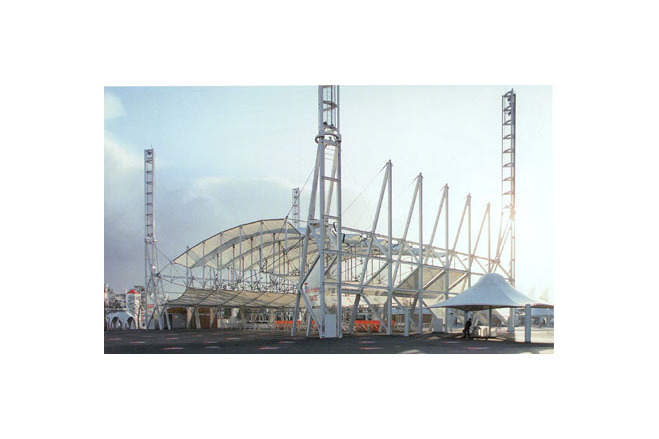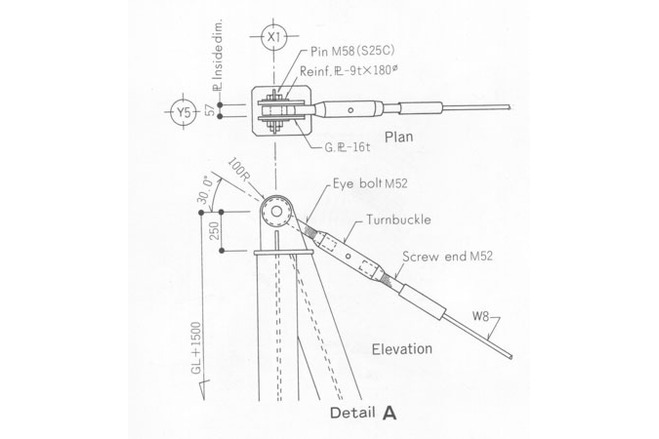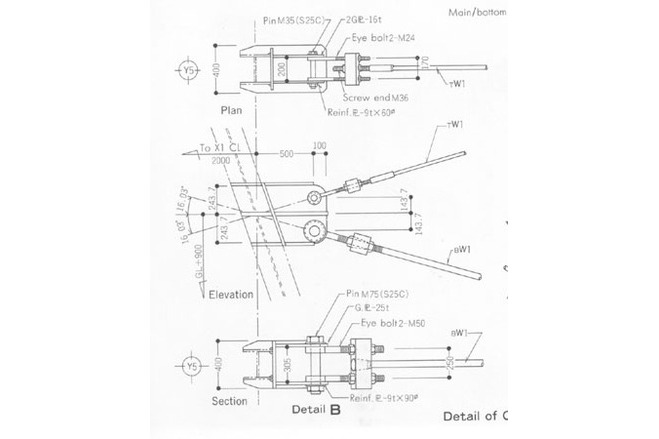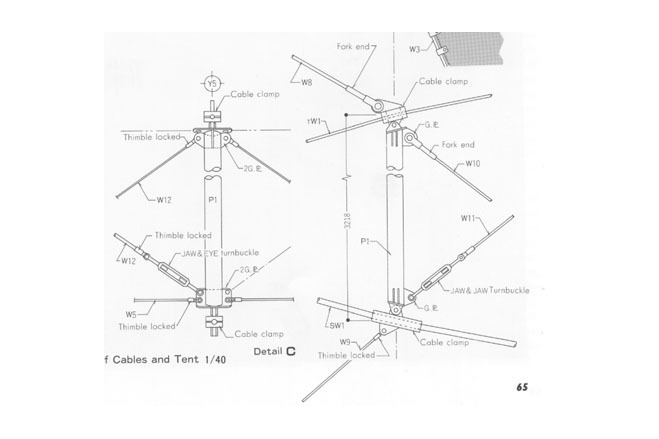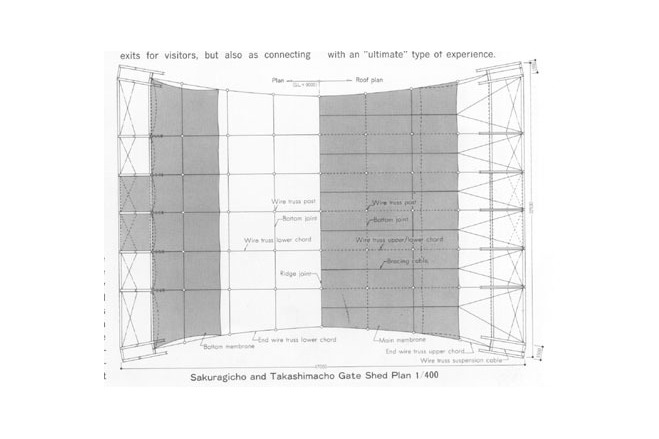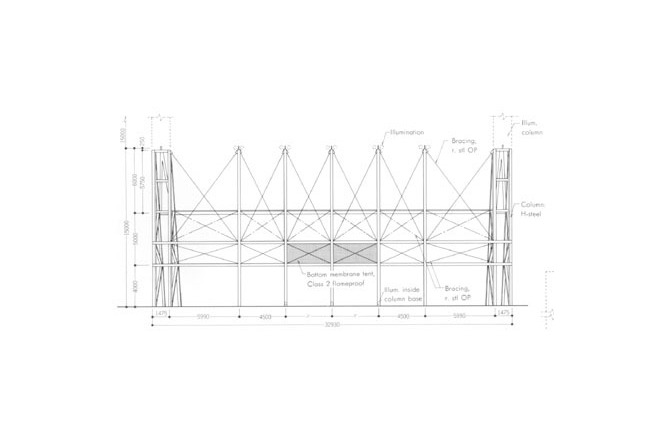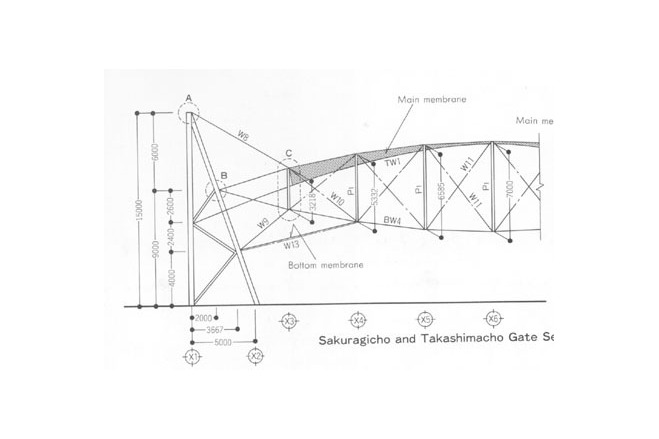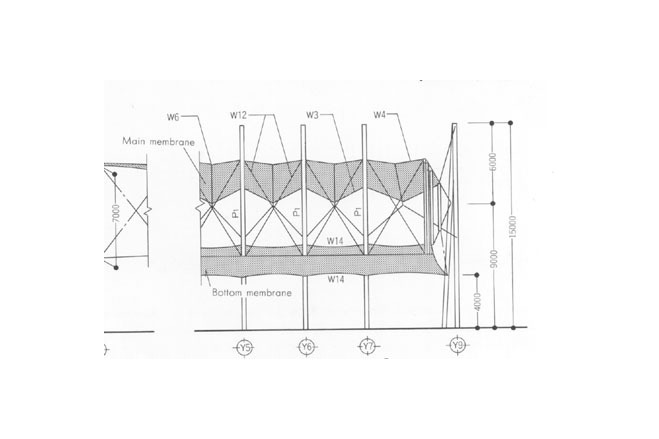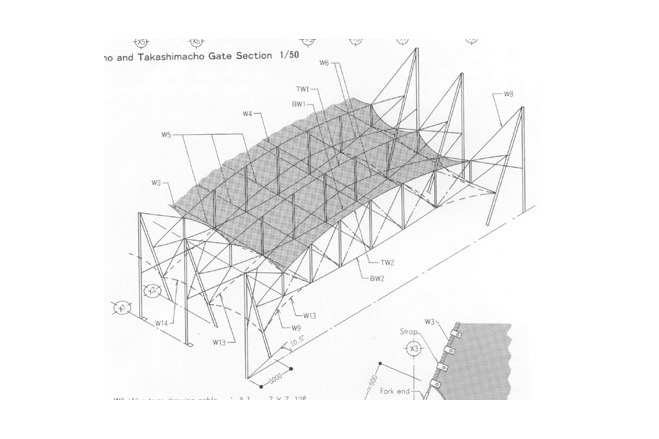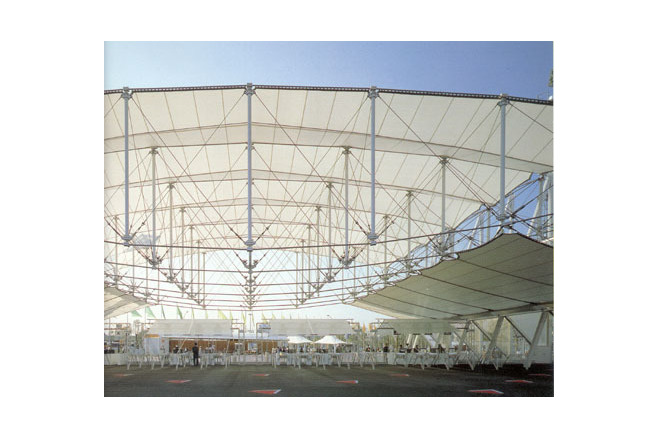Yokohama Exotic Showcase 1989 (Yokahama): Takashimacho-gate Area
General information
-
Location address
Yokohama
-
Location country
Japan
-
Year of construction
1989
-
Name of the client/building owner
Foundation Yokahama Expo Society
-
Function of building
Vehicle services
-
Climatic zone
Temperate - cold winters and mild summers
Description
Symbol of ExpoIn Yokahama Expo, four gates were set for several forms of transportation: railway lines, cable car and the bay-crossing seabus. The size of each gate was set according to the expected number of visitors. "Sakuragi-cho" and "Takashima-cho" gates were set at 50 x 30 m. Similarly, the gate for the Gondula line was set at 30 x 30 m, and the KD line gate was set at 15 x 15m. Around the gate shelters many services facilities were arranged. The gates were designed to create different scenes respectively and to be easily identifiable. From a distance, the gate integrated with illuminated towers appeared as guideposts for visitors and from a little closer view with more detail they appeared as floating clouds over entrances and exits.Since this Expo was open until late evening, the gate were designed to enhance mood even in the dark. Late comers viewed them as a huge shining clouds amongst rows of light.Prestressed Cable StructureMembrane structureing ideally expressed the desired image. It was best suited because of this and because of its constructability using common components for various sized gates. The style of the frae chosen was constructed by prestressed cables. Such a style differs from the suspension or rame types-these particular beams being composed of upper and lower chords with connecting diagonal members which prevent deformation.All chords are made from cable with supporting vertical compression poles which are made from steel pipes. The beams are intermittently positioned. By attaching the membrane material to upper chords and the top of the poles, it became possible to cover enormous areas reaching up to 50 m.The gates served not only as entrances and exits for visitors, but also as connecting passages to festival spaces and to the outside world. The designer aspired for the gates to assist in making incoming visitors thrill to the experience of entering with great expectations, and then to later leave with that lingering satisfaction and aftermath excitement. While harmonizing with the surrounding individualistic facilities, the gates have become successfully identified with an "ultimate" type of experience.[Membrane Structure in Japan, Kazuo Ishii, p 61]
Description of the environmental conditions
Material of the cover
-
Cable-net/Fabric/Hybrid/Foil
Cable
-
Material Fabric/Foil
Polyester
-
Material coating
PVC
Main dimensions and form
-
Covered surface (m2)
1547
-
Total length (m)
47
-
Total width (m)
33
Duration of use
-
Temporary or permanent structure
Temporary
-
Convertible or mobile
Convertible
-
Design lifespan in years
00-05
Involved companies
-
Architects
G.K. Sekkei Associates
-
Engineers
N. Inoue Structural Design
-
Contractors
Taiyo Kogyo Corporation
Editor
-
Editor
Marijke M. Mollaert


